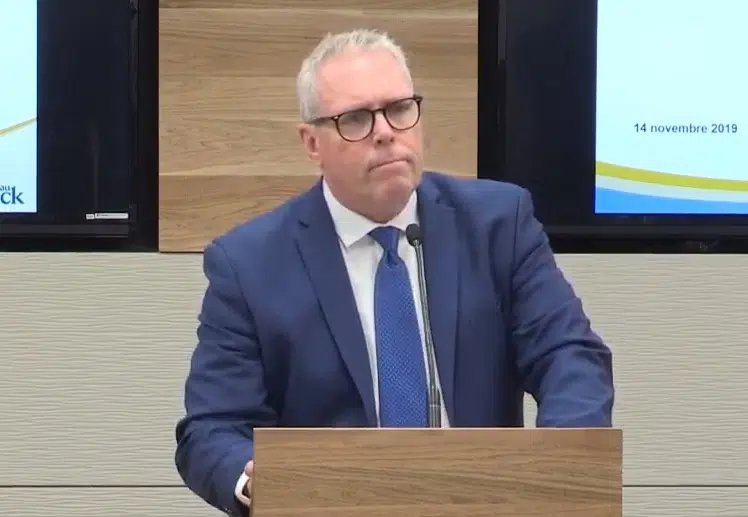
Finance Minister Ernie Steeves in an undated file photo. (Image: YouTube video capture)
New Brunswick is now projecting a $38-million surplus this fiscal year instead of a $245-million deficit.
Finance and Treasury Board officials unveiled the province’s 2021-22 first-quarter update Wednesday.
Officials said the surplus is due to $148 million in one-time federal funding the province received in July.
“To put things in perspective, if not for the federal funding, we would actually be showing a deficit,” Finance Minister Ernie Steeves told reporters.
That extra money included $103 million for health care system needs and COVID-19 immunizations, along with $45 million due to an additional one-time transfer under the Canada Community-Building Fund, formerly known as the Gas Tax Fund.
In addition, personal income tax revenue is expected to be $72 million higher, Canada Health Transfers are anticipated to increase by $82.2 million, and HST revenue is forecast to be up by $48.6 million.
Despite a rosy economic outlook for the current fiscal year, Steeves said they need to continue being responsible fiscal managers.
“The economy was pointed in the right direction prior to the onset of the fourth wave of the pandemic,” he said. “It’s very challenging, very challenging to predict what will happen next in the pandemic.”
$409M surplus in 2020-21
Finance and Treasury Board officials also released audited financial statements for 2020-21, which showed a surplus of $409 million.
That is well above the nearly $300-million deficit officials had been projecting early in the pandemic in May 2020.
Steeves noted there were two main factors that contributed to the surplus.
“A significant amount of one-time COVID-related money from the federal government and lower-than-expected spending, again, mostly related to the slowdown in government activity during the lockdown phases in particular,” he said.
Federal transfers increased by $293 million, offsetting a $253 million decline in own-source revenue, while expenses were $276-million below budget.
But Steeves cautioned that New Brunswickers cannot expect similar surpluses in future years, at least not due to federal transfers.
He also noted that the $409-million surplus does not mean the government has “a bunch of money sitting around that we don’t know what to do with.”
“In reality, showing a surplus of $408.5 million just means we owe $408.5 million less than we expected to. We still owe $13.5 billion,” Steeves said, referring to the province’s net debt.
The province’s net debt fell by $470 million over the past year and is forecast to fall by another $21.5 million this year.






